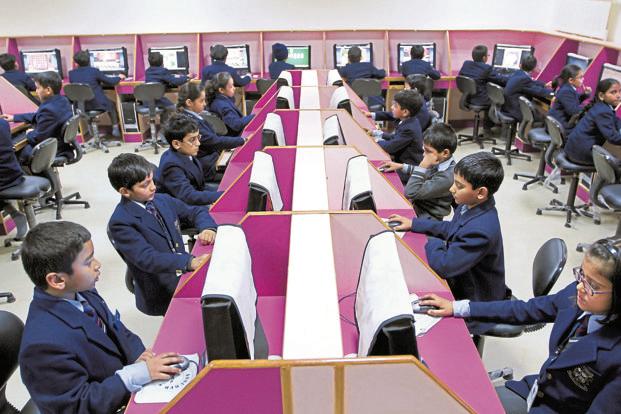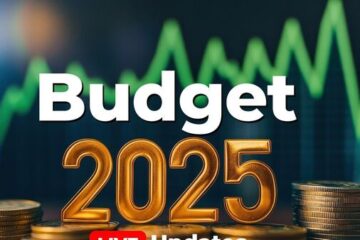
Ruby Rai made headlines last year when she termed political science as prodigal science, and claimed the subject involved cooking. Rai had topped the higher secondary examination in Bihar in 2016. Students like Rai are just the tip of what is probably a giant iceberg comprising poorly educated school students in India.
The 2016 Annual Status of Education Report (ASER), which was released last week, vindicates this theory. A look at ASER reports in the last decade punctures the rosy picture vis-à-vis school education which has been built from increasing enrolment. Here’s why. The percentage of children in standard five who can do division has declined from 42.5% in 2007 to 26% in 2016, while the percentage of those who can read a standard two text has worsened from 53% in 2006 to 48% in 2016. Only a fourth of students in standard five can read English sentences.
What is even more surprising is the fact that this decline has happened despite enhanced spending on school education. Between 2006 and 2013, public expenditure on school education increased from 2.2% to 2.68% of GDP.
To be sure, there has been a marginal decline in this figure in the last couple of years. Since, education spending depends on both central and state allocations; there is divergence in trends across states. In Madhya Pradesh, West Bengal, Andhra Pradesh (undivided), Maharashtra, Karnataka and Tamil Nadu; school education budget as a proportion of gross state domestic product (GSDP) has declined between 2012-13 and 2015-16 (budget estimates). In general, the share of spending on education is higher for special category states.
Having said that, India still lags behind most countries in terms of its education spending. At around 4% of GDP, India’s expenditure on education is behind that of comparable economies. World Bank data for 2012 shows that countries like Brazil and South Africa were spending at least 6% of their GDP on education.
This fact notwithstanding, the mismatch between learning outcome and education spending trends in India, calls for a serious introspection regarding our education policy and nature of spending.
In fact such a process might already be underway. Indian Express reported that a group of secretaries on education has made various suggestions to Prime Minister Narendra Modi to improve educational outcomes in the country. These include making English compulsory, doing away with no-detention policy till secondary school level and introducing provisions for third party surveys to measure educational outcomes . The Central government has also decided to include minimum levels of learning outcomes in the Central Rules of the Right of Children to Free and Compulsory Education (RTE) Act, 2009.
The importance of better monitoring and accountability in improving educational outcomes cannot be overemphasized. An earlier Plain Facts column had shown that differences in learning environment and quality of education were bigger factors in private schools being preferred over government schools in comparison to availability of government school or inability to get into one.
Moreover, there is reason to believe that headline numbers on increasing educational spending in India conceal some disturbing aspects vis-à-vis the nature of spending in school education. A December 2016 study by the Centre for Budget Governance and Accountability (CBGA) and Child Relief and You (CRY) found that in order to reduce the fiscal deficit, many states were moving towards appointing contractual teachers instead of expanding the regular teaching staff. This has led to deterioration in quality of teachers in schools. In 2013-14, there were 5.08 lakh contractual teachers at the elementary level, and only 60% of them had professional training. The extent of malaise varies drastically across states. At 52.2%, Bihar had the lowest share of professionally-trained teachers, while Maharashtra, at 99%, had the highest share. Despite the lack of trained teachers, spending on training has one of the lowest priorities in expenditure. Spending figures on inspection and monitoring also show a similar situation.
Under India’s RTE Act, School Management Committees (SMCs) have been assigned substantial powers to improve school functioning. However, no state has spent even more than 1% of their Sarva Shiksha Abhiyan budget to empower SMCs and strengthen community participation, even though this may be an easier way to fix accountability.
There is a lot of evidence which shows that investing in better monitoring outcomes can be extremely effective in improving functioning of schools.
The CBGA-CRY report cites a 2014 National Bureau of Economic Research (NBER) paper, The Fiscal Cost of Weak Governance: Evidence from Teacher Absence in India, jointly authored by Karthik Muralidharan, an economist at University of California, San Diego, and others which has estimated that 23.6% of teachers in India’s government-run schools in rural areas were found absent during unannounced inspections, which was inflicting a cost of $1.5 billion per year. This problem of absenteeism was eradicating the gains of lower pupil-teacher ratio achieved through higher teacher recruitment. The paper found that hiring more inspectors to improve the frequency of monitoring could be an extremely useful way to ensure low pupil-teacher ratios in effect.
Another 2016 NBER paper, Mobile Phones, Civic Engagement, and School Performance in Pakistan, by Minahil Asim from University of California, Davis, and Thomas Dee from Stanford University has found that monthly mobile phone calls to provide guidance to school council members resulted in meaningful increases in primary school enrollment, teacher attendance and school facilities.
The short point is increasing government spending in education is not enough to improve educational outcomes. India’s education policy must be thoroughly revised to put in place better accountability and monitoring mechanisms to exploit the gains of increase in fiscal outlays on education.
[Source:-Livemint]


